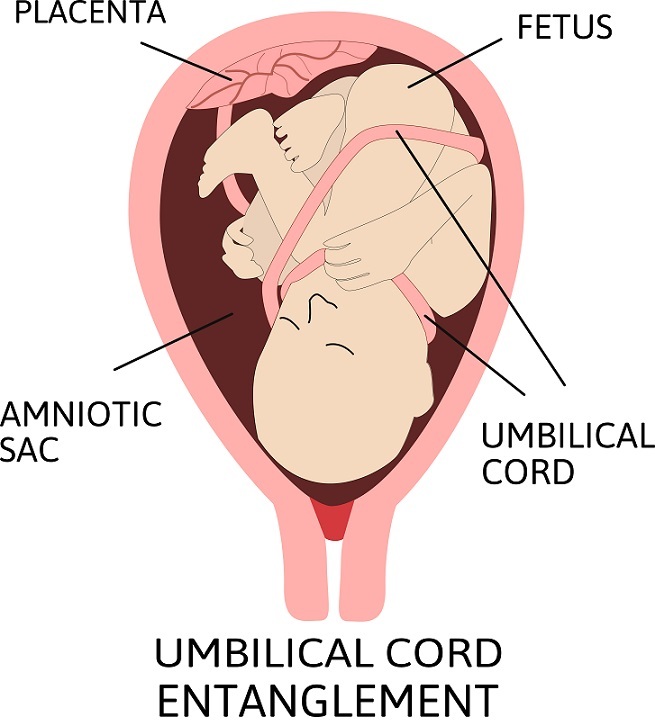
 Data Structure
Data Structure Networking
Networking RDBMS
RDBMS Operating System
Operating System Java
Java MS Excel
MS Excel iOS
iOS HTML
HTML CSS
CSS Android
Android Python
Python C Programming
C Programming C++
C++ C#
C# MongoDB
MongoDB MySQL
MySQL Javascript
Javascript PHP
PHP
- Selected Reading
- UPSC IAS Exams Notes
- Developer's Best Practices
- Questions and Answers
- Effective Resume Writing
- HR Interview Questions
- Computer Glossary
- Who is Who
Amniotic Sac: What does it Consist of and What is its Primary Function?
Introduction
The amniotic sac is a crucial component of the human reproductive system. It plays a vital role in the development and protection of the fetus during pregnancy.

The amniotic sac is a fluid-filled membrane that surrounds and protects the fetus during pregnancy. It is composed of two layers: the amnion and the chorion. The amnion is the inner layer of the sac, which is filled with amniotic fluid. The chorion, on the other hand, is the outer layer that forms the placenta.
In this article, we will explore what the amniotic sac is made up of, its primary function, and the importance of this sac in fetal development.
The amniotic fluid within the amniotic sac is crucial for the development and protection of the fetus. It is a clear liquid that is primarily composed of water, electrolytes, and other important substances such as hormones and growth factors. The amniotic fluid volume increases as the fetus grows, and by the end of pregnancy, there is approximately one liter of fluid in the sac.
Functions
The primary function of the amniotic sac is to protect the developing fetus from external shocks and movements. It provides a cushioning effect that helps to prevent damage to the fetus in case of sudden movements or impacts. The amniotic fluid also helps to regulate the temperature of the fetus, maintaining a stable environment throughout pregnancy. In addition, the fluid plays a crucial role in the development of the fetal lungs, digestive system, and other organs.
The amniotic sac also serves as a barrier that protects the fetus from infections. The fluid contains immune cells and antibodies that help to prevent the spread of infections from the mother to the fetus. The sac also acts as a physical barrier, preventing harmful bacteria and viruses from reaching the fetus.
During pregnancy, the amniotic sac undergoes several changes to accommodate the growing fetus. The volume of the amniotic fluid increases as the fetus grows, which helps to maintain the protective cushioning effect. In addition, the sac expands to accommodate the growing fetus, which allows for optimal fetal growth and development.
The rupture of the amniotic sac is known as the "breaking of the water." This typically occurs during labor and is a sign that the baby is ready to be born. The rupture of the sac allows the amniotic fluid to drain out of the vagina, which helps to facilitate the delivery of the baby. In some cases, the amniotic sac may rupture prematurely, which can increase the risk of infection and other complications.
Conclusion
The amniotic sac is a crucial component of the human reproductive system. It plays a vital role in the development and protection of the fetus during pregnancy. The sac is composed of two layers, the amnion, and the chorion, and is filled with amniotic fluid.
The primary function of the sac is to protect the developing fetus from external shocks and movements, regulate the temperature of the fetus, and prevent infections.
The sac undergoes several changes during pregnancy to accommodate the growing fetus, and the rupture of the sac is a sign that the baby is ready to be born.
Overall, the amniotic sac is an essential part of fetal development and plays a critical role in ensuring a healthy pregnancy and delivery.
FAQs
Q1. How does the amniotic sac protect the fetus from infections?
Ans. The amniotic sac acts as a physical barrier, preventing harmful bacteria and viruses from reaching the fetus. Additionally, the amniotic fluid contains immune cells and antibodies that help to fight off infections and prevent their spread to the fetus.
Q2. What happens if the amniotic sac ruptures prematurely?
Ans. If the amniotic sac ruptures before labor begins, it is known as premature rupture of membranes (PROM). This can increase the risk of infection and other complications, and medical attention should be sought immediately.
Q3. What is the significance of the "breaking of the water" during labor?
Ans. The rupture of the amniotic sac during labor is a sign that the baby is ready to be born. It allows the amniotic fluid to drain out of the vagina, which can help to facilitate the delivery of the baby. In some cases, the amniotic sac may need to be artificially ruptured to induce or augment labor.
Q4. What is the amniotic sac, and what is its function?
Ans. The amniotic sac is a fluid-filled membrane that surrounds and protects the developing fetus during pregnancy. Its primary function is to cushion the fetus against external shocks and movements, regulate its temperature, and prevent infections.
Q5. What is the amniotic fluid, and why is it important?
Ans. The amniotic fluid is a clear liquid that fills the amniotic sac during pregnancy. It contains water, electrolytes, hormones, growth factors, and immune cells. It helps to cushion the fetus, regulate its temperature, and provide a stable fetal growth and development environment.

